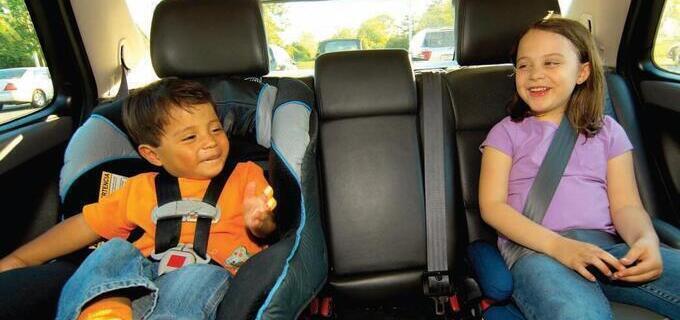Research In Action
Research In Action
Breadcrumb

Automated vehicles present new challenges for safety restraints such as seat belts and child seats. It has been hypothesized that in automated vehicles we will engage in activities such as sleeping and relaxing that will lead to reclined seatbacks. Current vehicle safety countermeasures (such as seat belts and airbags) and child seats have not been designed for these reclined seating configurations.
Most research on reclined occupants has been conducted on adults in simulated frontal impacts, and it suggests that small female adults are at higher risk of submarining (i.e., the motion of the pelvis under the lap belt can cause the seat belt to slide into the abdomen and potentially lead to serious to fatal injuries to internal organs). However, less is known about the safety of reclined children in a motor vehicle crash.
Research on Child Crash Dummies in Reclined Seats at CHOP
At the Center for Injury Research and Prevention at Children’s Hospital of Philadelphia, we investigated what happens when a child crash dummy is seated in a booster seat on a reclined vehicle seat. We found that some booster seats can still help to prevent the child from sliding under the lap belt in a frontal impact and potentially decrease the risk of abdomen injury.
In a subsequent study, we recruited child volunteers to sit in one of our laboratory custom-made fixtures -- a low acceleration sled that simulates the movement of a vehicle performing an avoidance maneuver on the road. The sled was built to mimic the motion of a bumper car park ride while still being able to reproduce a similar acceleration of a vehicle performing a crash-avoidance maneuver, such as an evasive swerving.
The children’s movement on this sled was tracked with a 3D motion capture system, which is the same technology used for action movies. This system allowed us to track maximum child head and trunk motion during the simulated evasive swerving maneuver. From this investigation, we found that in lateral crash-avoidance maneuvers, the children’s lateral head and trunk motion decreased the more they were reclined when seated in a booster seat.
This suggests that when a child is seated in a booster seat and the vehicle seatback is reclined during a lateral evasive swerving vehicle movement, the child’s upper body may be in a more advantageous position within the shoulder belt. In fact, we found the more the vehicle seatback was reclined, the less the child was displaced out of the optimal position within the shoulder belt.
Expanding the Impact of Child Seat Research
In a recently published study, we asked ourselves if these results could be extended to small adult occupants, since previous research showed that small adults were at more risk of injury in reclined configurations. Because the size of children may be similar to the size of small female adults, we examined if the presence of a booster seat could also improve the motion of small female adults. We tested a recently developed crash dummy, the THOR-AV-5F representing a small female adult, on a booster seat in similar lateral crash-avoidance conditions in which we tested children. We used the same motion tracking technology to measure head and trunk motion of the THOR-AV-5F.
We found that the small female adult dummy also showed a decreased lateral head and trunk motion the more the vehicle seatback was reclined but only when the booster seat was present. This research shows that automated vehicles of the future that accommodate reclined seating may need a modification of the seat pan that could help “boost up” small occupants of any age.
However, countermeasures should not just be considered in a vacuum. Vehicles have many factors that influence occupant protection beyond the seat and the child restraint system, such as the presence of a pretensioner belt (a mechanism that removes the belt slack in a crash to reposition the occupant), the position of the attachment of the seatbelt, or the geometry of the seat and the vehicle. Future research should also investigate the interaction between all these different factors with reclined seating.
Our findings highlight that adult and child research in automotive safety should occur in parallel rather than sequentially, as solutions that benefit children may fuel design ideas for countermeasures that could benefit small adults.


